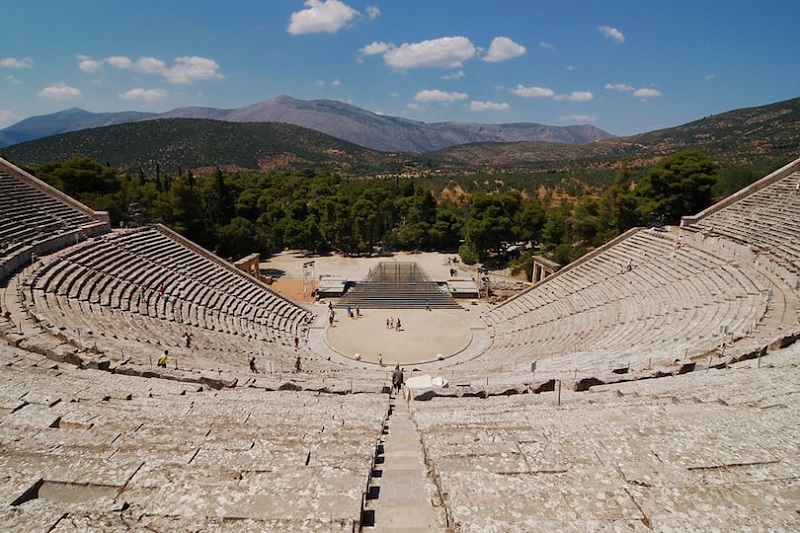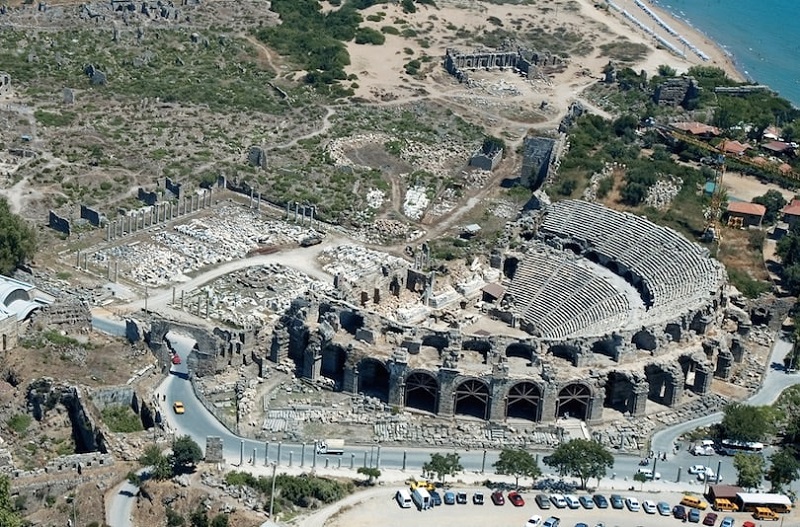Nestled in the historic city of Ephesus, near modern-day Selçuk, Turkey, the Great Theater is a monumental testament to the architectural and cultural achievements of the ancient world. Originating in the 3rd century BC, this grand structure was capable of seating approximately 24,000 spectators, making it one of the largest theaters of the ancient world.

The photograph showcases a compelling juxtaposition: the top image is a vibrant reconstruction depicting what the theater might have looked like in its heyday, complete with ornate stage buildings and richly colored seating areas, while the bottom image captures the present-day ruins, still majestic but bearing the marks of time and history. This visual comparison not only highlights the theater’s original splendor but also underscores the challenges and triumphs of archaeological restoration and preservation.
Constructed initially in the Hellenistic period, the theater underwent numerous renovations under Roman rule, which expanded its capacity and enhanced its design to accommodate the popular theatrical and gladiatorial shows of the time. The semicircular auditorium, built into the slope of Mount Pion, provided excellent acoustics, allowing even those in the uppermost seats to hear the performances clearly.

The Great Theater’s stage building was an architectural masterpiece, adorned with columns, statues, and reliefs that depicted various gods and important figures—elements that can be glimpsed in the reconstructed image. These decorations not only served aesthetic purposes but also reflected the religious and cultural milieu of Ephesus, which was a significant city in the Roman Empire and an important center of early Christianity.
Today, the ruins of the Great Theater continue to attract scholars, historians, and tourists from around the world. Visitors are often struck by the sheer size of the amphitheater and the ingenuity of its design, which allowed it to serve multiple functions, from theater performances and political gatherings to gladiatorial combats.

Despite the passage of millennia, the Great Theater of Ephesus stands as a durable link to the past, offering insight into the social and cultural dynamics of ancient Ephesus. Preservation efforts in recent decades have focused on stabilizing and restoring the structure to ensure that it continues to educate and inspire future generations.
The theater is not only a symbol of the artistic and engineering prowess of the ancient Ephesians but also a reminder of the universal human attraction to performance and spectacle—a connection that transcends time and continues to draw people together, much like the audiences that once thronged its vast seating tiers. Whether as a hub of entertainment or a beacon of historical learning, the Great Theater of Ephesus remains one of the most impressive and significant archaeological sites in the Mediterranean region.








